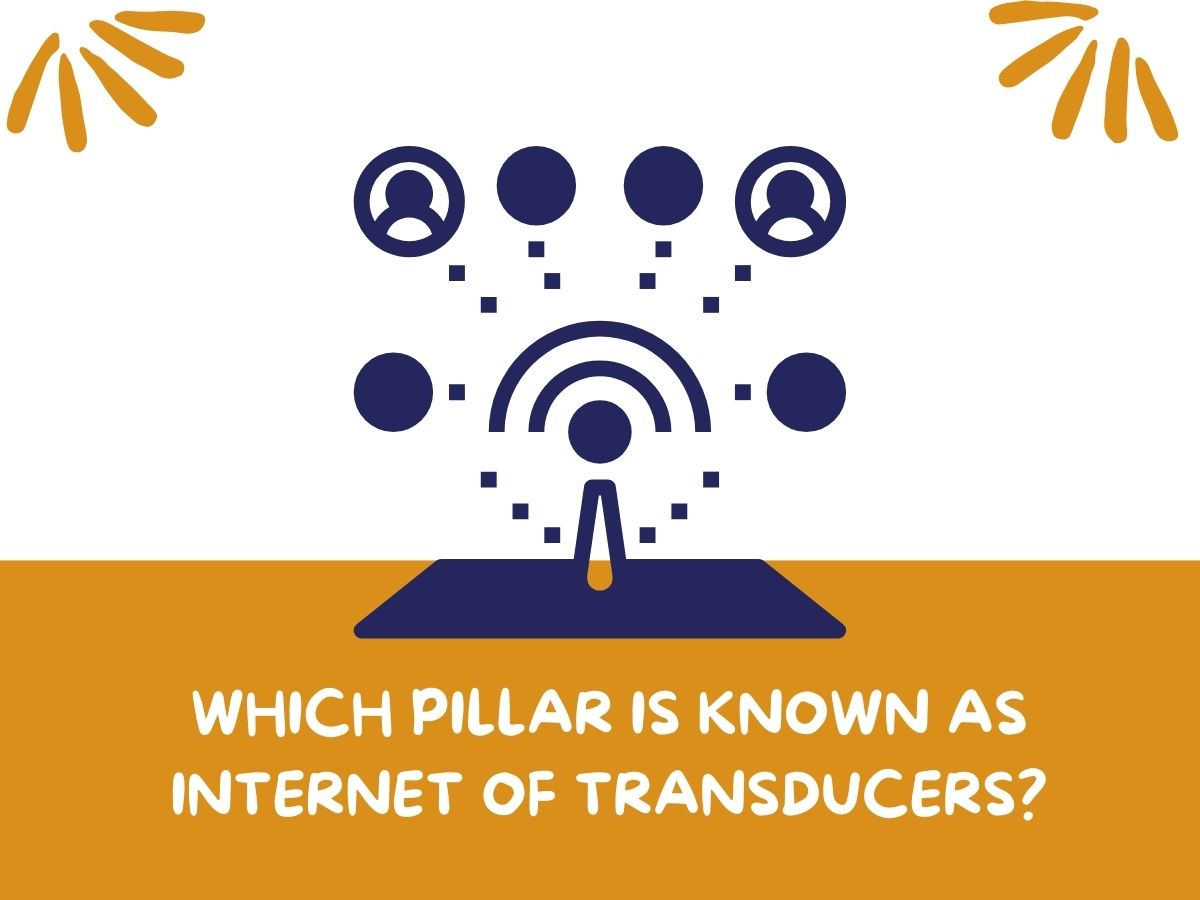Which Pillar Is Known As The Internet Of Transducers?

Since its inception, the Internet has connected individuals with one another.
Nevertheless, a developing portion of the Internet does not connect people to other people; rather, it connects people to things. Barcodes and scanners, for instance, connect parcels to the Internet so that they may be traced until they reach their destination.
Internet-connected equipment in the industrial sector gives businesses greater control and visibility over their production processes.
Internet of Things (IoT) links things with embedded sensing, processing, communication, and limited analytic capabilities. Four fundamental capabilities support Internet of Things technology.
This so-called Internet of Things (IoT) will become increasingly reliant on transducers, which sense information that may be sent to the Internet as it expands.
Two Varieties of Transducers
At its most fundamental level, a transducer is a device that changes one type of energy into another. Transducers come in two varieties: sensors and actuators.
- Sensors detect energy forms, such as light or force, and turn them into output-capable digital information.
- Actuators accept and produce an input but operate in the opposite direction as sensors. An actuator is a transducer that receives information and produces physical energy. Using actuators, your smartphone can vibrate in your pocket, for instance.
- Transducers that convert a physical impact into an output signal are called sensors. This may be a thermocouple emitting a quantifiable voltage change when heated or cooled. A charge is generated when a force is applied to a piezoelectric force washer.
The Industrial Internet of Things (IIoT)
Transducers for the Industrial Internet of Things (IIoT) enable numerous industrial processes to utilize big data, analytics, and machine learning technologies. Specifically, transducers can detect performance and machine deterioration indicators, enhancing efficiency and preventing breakdowns.
Using Big Data approaches with transducer technology, businesses can identify previously unseen production cycle elements. This results in the dissolution of divisions between engineering, manufacturing, and support.
As the Industrial Internet of Things is still in its infancy, there are still numerous opportunities for businesses to get a first-mover advantage. This cresting wave of upheaval will likely produce brand-new leader and follower groupings.
The Role of Transducers in the IIOT
While analytics and other Big Data technologies may be the "brains" of the IIOT, transducer systems are the nervous system, continuously capturing data and transmitting it to processing centers. Industrial Internet systems rely on sensors for continuous, accurate data to detect characteristics such as pressure, temperature, volume, and orientation.
The functions of automation and machine learning in future industrial technologies have received a lot of attention. Without cutting-edge sensor technology, however, software developments will only give limited benefits.
Consider the following industrial transducer technology examples:
- Temperature - Various types of sensors are used to measure temperature. Contact type and Non-contact type are the two basic types. Mechanical temperature sensors, electrical temperature monitoring, thermocouples, resistance thermometers, and silicon band gap sensors make up these categories. These sensors are utilized for the monitoring and maintenance of temperature-sensitive systems.
- Strain gauge technology for precise and rapid force measurement. Strain gauges measure the deformation of things and convert the mechanical force into a change in electrical resistance.
- Similar to measuring force, strain gauges may also measure torque. Numerous torque meters simultaneously monitor rotational speed to determine mechanical power.
If you want to get internet connection in your home or office then you must visit Finndit.Com once because Finndit gives you information about best internet service providers according to your location.
View Also -
